Home
Red, Turned-on and Ablaze
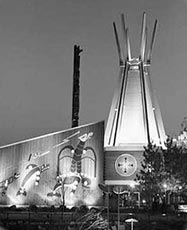
INDIANS OF CANADA PAVILION EXPO 67
Norval Morrisseau and Alex Janvier painted its outside walls, Kwakwaka'wakw sculptors graced it with a totem pole especially designed for the occasion and Jean-Paul Nolet welcomed visitors from everywhere on Earth. In 1967, for the first time in a Universal Exhibition, the Indians of Canada (who would soon prefer to call themselves the First Nations) spoke in their own voices in a pavilion dedicated to their peoples.
Man and His World, Montreal, in 1967, provided First Peoples the opportunity, in the context of a broader cultural dialogue, to express their difference while showcasing their artistic and cultural wealth. At the same time, they minced no words about their longstanding historical grievances with regard to Canadian society.
Forty years later, in the same spirit, Montréal First Peoples' Festival is a platform for Amerindian and Inuit artists and an imperative cultural meeting place welcoming First Nations and the general public, an opportunity for international encounters and a forum for no-holds-barred debates on topics close to Aboriginal Peoples' hearts.
Every year, for 11 days in June, Montreal once again becomes the centre where a worldwide emancipatory movement converges. Its artistic, sociological, philosophical and spiritual reverberations are in synch with the great concerns of our times. Visionary artists, whose creative inspiration draws upon ancient wellsprings, come to salute the summer solstice on a mythic isle. The wheel of time completes its cycle; the sun is rising to its zenith — First Peoples' Festival returns.
Montreal's First Peoples' Festival 2007 Awards
Teueikan Grand Prize

WILLIAM
The director's luminous work allowed Aboriginal actors to create roles against the lights and shadows of a rainy night, making magical imagery appear on the screen like rabbits pulled out of a hat, suddenly plunging filmgoers into the wanderings of a wounded soul, leaving them disoriented and dazzled.
For the tender face bestowed upon its heroes' human suffering, the flashes of authenticity that break open a dark night where a taxi and its passengers are afloat and its lifelike, ungimmicky portrayals of Aboriginal characters The First Peoples' Festival 2007 awards the Teueikan Grand Prize to Eron Sheean for William.
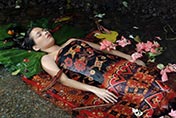
TULI
Naïve pictorials kick off the film, lulling viewers into thinking they will see a sunny chronicle of work and life in a Filipino village. But suddenly, a hot-tempered father's violent rages smash apart this idyllic tableau. . From that point on, order cannot be re-established until an even greater fury faces off against patriarchal abuse. For this extraordinary fable where a daughter's revolt against a father's unbridled authority announces a better society, with a deeply sympathetic understanding of the humble people of an isolated community, and its sincere belief in traditional communities' ability to accept differences The First Peoples' Festival 2007 awards the Teueikan Second Prize to Aureus Solito for Tuli.
Rigoberta Menchu Grand Prize

PIRINOP
Concerned voices were raised for the survival of an Aboriginal people threatened by white people encroaching on their lands. But despite good intentions, little care was taken about the impact the great displacement would have for the Indians, after this initial contact. Since then, the Ikpeng, like wounded souls, had to keep the outlook they had never had an opportunity to express deep within themselves.
For its journey to the lifespring of gurgling voices and focus on the hopes of a people thirsting for autonomy, for reinterpreting ancient dreams in the liberating light of the present day, the First Peoples' Festival 2007 grants the Rigoberta Menchu grand prize to Mari Corêa and Karané Ikpeng pour Pïrinop, Mon premier contact.
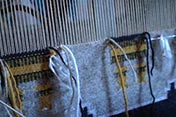
WEAVING WORLDS
Nimble hands weave the harmonious motifs of Navajo rugs as they embody the nation's memory. Here is a film capturing the humble grandeur of the weavers' art. In the privacy of their hogans, these women have created unique works of art, provided their families' needs for several generations and above all kept intact the immemorial thread connecting their everyday gestures to ancestral tradition.
For this tribute to their patient and prodigious efforts to change the course of history in a harsh daily life environment, for a complex film that unravels the weft of economic dispossession that prevented these craftswomen from getting their fair share of the profits brought in by the sale of their works, and an introspective journey to the heart of the firmly-woven Navajo social fabric these tireless, generous women have created, the First Peoples' Festival 2007 jury grants the second Rigoberta Menchu Award to Bennie Klain for Weaving Worlds.
Séquences Best Documentary Prize

RIDING WITH GHOSTS
A tenuous, mysterious thread runs through the pieces of lives the documentary assembles on screen. Fine, almost invisible sutures stich together the disparate elements making up this film mosaic illustrating the torments of a wounded collective psyche and sketching out the arcane paths through which healing can take place. For a masterful work of art, with a deep feeling of forthcoming redemption emerging beneath the seeming chaos of broken lives, the Séquences magazine jury awards the Best Documentary prize to Jim Starkey and Joe Hubers for Riding with Ghosts.
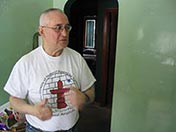
KIVIAQ VERSUS CANADA
For its honest portrayal of an activist involved in the defence of Inuit rights as it presents an underlying criticism of Canadian social attitudes towards Aboriginal nations, the jury of Sequences magazine awards a special honour in the documentary category to Zach Kunuk for Kiviaq versus Canada.
Best Short Subject
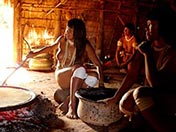
IMBÉ GIKEGÜ, THE SENT OF THE PEQUI FRUIT
A horny alligator gets it on with two sisters, but the agouti snitches on them to the husband. A fruit tree takes root on the grave of the alligator killed by an arrow delivered in the midst of the coital act. For a jubilatory video depicting the easy sensuality of the happy lives the Kuikuros led in the midst of the heady perfumes of aphrodisiacal fruits and swarms of hummingbirds, the First Peoples' Festival 2007 jury awards the best short subject prize to Takuma and Marica Kuikoro for Imbé Gikegü, The scent of the pequi fruit.
Best Animation

POPOL VUH
The cosmic twins confront the infernal gods in a devilish match: a tale full of twists and turns. Animation based on the murals in Mayan temples brings this story back to life. For giving a form and a face to the gods of the Mayan pantheon, delivering an accessible work of art that enables viewers young and old to access our continent's oldest creative sources, and the consummate art of animation film techniques behind its creation, the First Peoples' Festival jury awards Best animation film prize to Ana Maria Pavez for Popol Vuh.
Mainfilm Young Hope Prize

WABAK
For his creative use of forward travelling, making narration and incantation become one, for his understanding of the creative and ceremonial essence of the tales from oral tradition and the revelation he provides us of Algonquin language's resonance, the Mainfilm jury awards the Young hope prize to Kevin Papatie for Wabak.
Best Photo Direction

WILLIAM
The ink-black night becomes a mysterious ocean. A water taxi carrying the heroes of the film is borne and battered by deep, murky currents. Flashes of light, shimmering in the rain, are absorbed by the voracious, viscous darkness. For her ability to create a phantasmagorical atmosphere in a studio setting, giving a dreamlike dimension to her realistic story line and for her ability to convey images suggesting the unfathomable depths of the human soul, the First Peoples' Festival jury awards the Best Photo Direction prize to Anna Howard for William.
Dr Bernard Chagnan Assiniwi Prize
Former Mohawk wrestler Billy Two Rivers, after being elected to the Mohawk Council of Kahnawake for 20 years, is now called upon for his experience and his wisdom.
